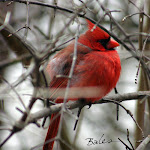
Turquoise and purple berries, like shiny ceramic pearls fired with a translucent glaze.
There’s an ebb and flow to the natural world, but sometimes the flow becomes a tsunami. Last week I wrote about the phragmites, a.k.a. common reed grass that’s overwhelming the coastal northeast.
Porcelain berry, Ampelopsis brevipedunculata—now there’s a mouthful of Latin. You better sit down before you try and say it. Brevipedunculata means "having short peduncles."—is yet another non-native plant that’s invading the Mid-Atlantic natural areas. Originally from Asia: China, Korea, Japan and Russia, its colorful berries made them a favorite landscaping ornamental.
The trouble is, it’s a vine, and vines lack the fortitude, the gumption, it takes to stand alone as they grow towards the sun. Instead they take the easy way out and use a tree for support, often killing the very prop they depend on. It thrives in wetlands, along streams and rivers out-competing native plants.
The city of Milford, Delaware has created a Porcelain Berry Task Force to get control of the spread of the vine that has infested 200-acres in the Mispillion River watershed where the city is located.
There is some porcelain berry in the Tennessee Valley but it has yet to become a huge problem. We have our hands full with kudzu, privet and bush honeysuckle.

•


































































No comments:
Post a Comment